Excellent core hearing aid functionality is key to success. Choosing the correct level of amplification, fitting to your ear and technology level for your hearing needs must be guided carefully by your Audiologist. Follow this link for more details about how we go about assessing your listening needs.
The post Hearing Aid Technology and Innovation appeared first on Auckland Hearing.
]]>Have you thought about how you would like your hearing aids?

Like computers, tablets and phones, innovations in hearing aid technology is improving quickly. Hearing aids have more and more functions and features which fit into tiny packages that sit in or behind your ear. Current hearing aids do more than compensate for hearing loss with amplification. They are small computers that measure your sound environment then modify the way they amplify to maximise your hearing clarity.
When getting hearing aids, we need to consider the technology level and functionality that will best compensate for your hearing loss. There are also other features and additional connectable technology you might find useful to make life easier.
Getting the right hearing aids for you
Once we have decided on the right hearing aid technology for you, we can consider the added features that are available. These can help with ease of use, connectivity and better hearing in specific listening environments. These features are available at most technology levels. Once we have decided on the right hearing aids for you, we can determine if you would like any additional technology to go along with them.
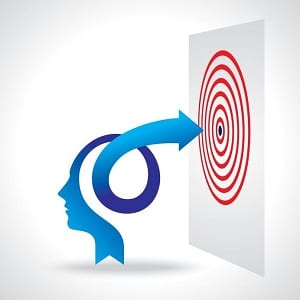
What recent innovations should you consider for you hearing aids?
Control your hearing aids with an app

In an ideal world, hearing aids measure the sound environment, highlight the sound you want to hear and bring it to you with increased clarity. In most cases, hearing aids do this well. However, at times, you may wish to adjust the hearing aid sound for the environment you are in. You may want to appreciate the nuances of music, hear the person who is speaking from behind you, like in a car; or understand better in a particularly reverberant (echoey) room.
In these cases, you may want to change the way the hearing aids are working; adjust the volume or focus on sound in a particular direction. These are the situations where a remote-control app may come in handy. Apps usually give you the option to change your hearing aid volume, program setting and, in some cases, pitch and adjust how the hearing aids respond in noise.
Rechargeable batteries
Rechargeable batteries in hearing aids have been available for several years. Within the last year, we have seen a surge of new rechargeable hearing aids from more manufacturers with improved battery life. The three main reasons to choose rechargeable hearing aids:
- Simplicity – pick up your hearing aids and put them on in the morning and at night put them back in the charger. No need to open battery doors to turn them off or having batteries run out unexpectedly.
- The environment – many people are aware of the waste they create when they dispose of used hearing aid batteries every week or two.
- Less cost and hassle– although the battery charger costs a little more at the beginning, there is an overall cost saving when choosing rechargeable hearing aids. There is also the added convenience of not having to think about buying batteries.
Brain and body tracking
New hearing aids from Starkey and Oticon can now work as a fitness tracker, measuring the steps you do each day. Some hearing aids have inbuilt systems to keep you active both physically and cognitively. Features released in 2019 in by Starkey are:
- Track your daily steps and set a goal to encourage you to stay active every day.
- Fall detection – they will send family members a text if you fall
- Soon to come – Heart rate measurements – which can send an alert if the wearer is soon to heave a heart attack and sedna text mesasage to up to 3 family members.
- Your hearing aids can measure the amount of time you are using them and you can see your useage on the app. We know from reseach that the more you wear your hearing aids the better it is for your brain and cognitive function (including memory).
Voice to text transcription
Voice to text transscription allows you to communicate with someone who speaks a different language. Speak into your phone and it translates into text of the language you are commincating to. They talk back into your phoen and it translates back to English (or other language) and is spoken into your hearing aids.
Hearing aids self check
Hearing aids self check lets you know if you hearing aids are working as expected. When the hearing aids are new we run a check in the office. Then at anytime this test can be rerun with the results compared to the intial test. The hearing aids will let you know if they are working as expected or if they are not working correctly which part of the hearing aids needs to be repaired. The microphone, amplifer or receiver (lond speaker). This allows for accurate trouble shooting and keeping your hearing aids working as expected at all time.
Connectivity – hear directly from your phone
Connect directly to media – Tv, computer, sound systems

Connecting your hearing aids directly to your TV, sound system or tablet means you will hear the sound a lot clearer the first time. Following the dialogue in movies and TV becomes so much easier. In most cases, we need to add an intermediate device that sends the signal from your preferred audio device to your hearing aids.
Remote microphone technology
One of the biggest challenges for people with significant hearing loss is hearing across distance. Speech understanding can be difficult over more than a few meters, even the best hearing aid technology. Another built-in advantage of the connectivity is that you can use your phone as a remote microphone. Just put your iPhone at the other end of the table or give it to the person with the quiet voice. The sound that reaches the iPhone microphone (or a connected remote microphone) and will be sent directly to your hearing aids.
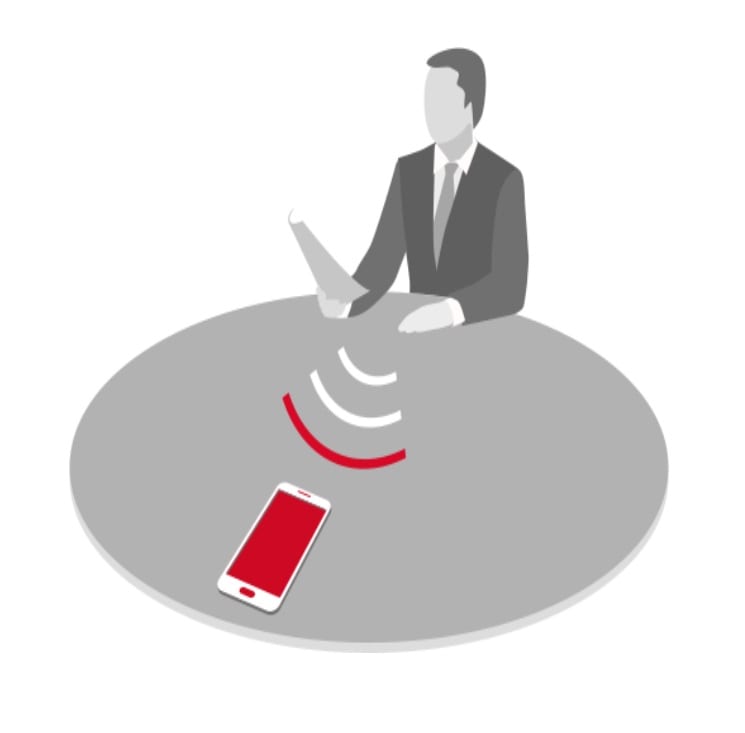
Remote programming
For some people getting into the clinic to see your audiologist can be a challenge. Maybe you live a long way from the clinic, are not able to get to appointments during work hours or are homebound, for medical or transport reasons. If this describes you, then we have a solution – Telecare audiology is now a reality.
Tele-audiology means that some of the hearing aid fitting process can be delivered from the comfort of your home or office. Once we have done a thorough hearing assessment and have fitted the hearing aids in the clinic (using real ear measures), we can do further follow-ups from a distance. All you need is a smartphone, and your hearing aids can be adjusted over the internet. Being able to customize your hearing aids from the comfort of your home makes the process of getting hearing aids more manageable than before.
Hearing aid style and cosmetics
Finding the most discrete hearing aids is a priority for many new hearing aid users. Cosmetics, of course, has to be balanced with comfort, reliability, sound quality and functionality (hearing well in more complex situations). Some of the smaller hearing aids, look great and may be able to compensate well for your hearing loss, but may not work as well as other styles in difficult listening situations.
Receiver in the canal (RIC)
The most commonly fitted style of hearing aids in recent times is the Receiver In the Canal (RIC), also known as the Receiver In The Ear (RITE) / (RIE). These hearing aids have a relatively small hearing aid that sits behind the ear, the receiver (loudspeaker) that sits in the ear.
These hearing aids are discreet, comfortable and easy to wear. If there is a change in hearing levels, the receiver can be changed easily to a more powerful loudspeaker, in the clinic. Or if the receiver breaks down, it can be replaced in the clinic with less hassle (at a significantly lower repair cost). Receiver in the canal hearing aids can be worn with universal fit domes or custom moulds.
There are also many behind the ear styles available with various tubing options for those with more significant hearing loss or other specialise hearing needs.
In the canal hearing aids (IICs, CICs and ITEs)
Some people prefer not the have anything sitting behind their ear. There are various size options available to match your priorities, including Invisible in the Canal (IIC) hearing aids, Completely in the Canal (CICs) and In the Ear (ITE) hearing aids. Most brands have these hearing aid styles available.
ITE hearing aids have historically come with trade-offs in comfort and reliability. Having an electronic device deep inside your ear means more problems with moisture and wax; these issues improved dramatically over the past few years. There are many in the ear styles available.
So – how would you like your hearing aids?
In my experience, most people like milk with their tea. Some people enjoy sugar in their coffee. Sometimes I prefer herbal tea.
How do you like your hearing aids?

Connectable?
Rechargeable?
Fall detection?
Remote progamming?
Significant research and development in hearing aid technology means new hearing aids are being released almost continually. As you can see, there are many options to be considered when choosing hearing aids. It is essential to consider how you would like your hearing aids to work for you. Our needs assessment will help steer you in the right direction to get the hearing aids that suit your lifestyle and listening needs best. Finding out about your preferences is an integral part of choosing the best hearing aids for you.
At Auckland Hearing, we keep up to date with new developments from all the manufacturer’s product lines. This is so we can choose the most up to date hearing aids that are best suited to your needs.
The post Hearing Aid Technology and Innovation appeared first on Auckland Hearing.
]]>The post Getting Hearing Aids – What is the Process? appeared first on Auckland Hearing.
]]>5 Steps to hearing aids
The first and hardest step for many is the first one, making an appointment for a hearing test. Research has shown it takes people 7 to 10 years to do something about their hearing loss. Of course, while you are getting used to the idea that you may have some hearing loss, you are missing conversations and connections with people every day.
Adapting to hearing loss by changing the way you live your life
When you have hearing loss, the people around you adjust to your hearing loss so they can communicate with you. Friends and family learn they need to speak louder so, they do not have to repeat themselves. As time goes by, they may choose not to share incidental comments. You may start to make different decisions on how you will use your time (like avoiding social situations and communicating less). Hearing loss impacts the way you live your life. There is also a lot of new research showing other long-term effects of hearing loss when it is left untreated.
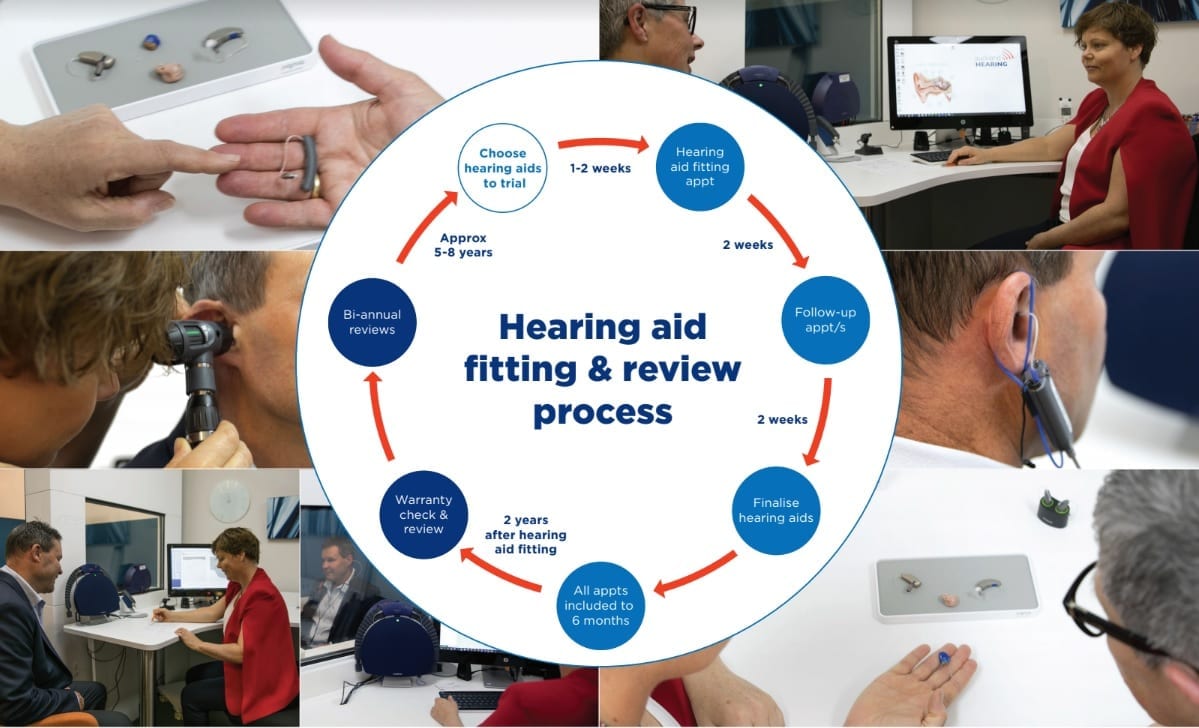
Diagram showing the process an approximate timeline for the life cycle of a pair of hearing aids
Step 1: Book a time to see us
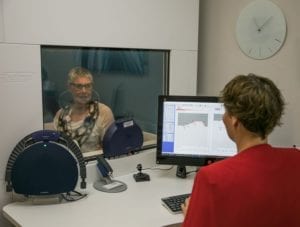
Having a hearing test
The first easy step is to have a hearing test. The hearing test will give you a clearer idea about your type and degree of hearing loss and how this is affecting the way you live your life. For example; your hearing test may explain why you can hear some sounds as well as everyone else; but you can’t follow the conversation when it is noisy. At this point, we will also suggest your options for help with your hearing, and if we need to refer you to a medical specialist, we will look at this point.
The next question is “Do you need hearing aids?”. Your audiologist will let you know if your hearing is in the range where hearing aids will help and your family may also have an opinion on you getting help with your hearing. However, it is essential that once you decide to get hearing aids that you are taking this step for yourself. It is true that other people in your life are probably affected by your hearing loss. However, it is better for everyone if getting hearing aids is your choice.
Step 2: Hearing Assessment & Discussion
A full diagnostic hearing test will clarify your hearing levels and help identify possible causes of your hearing loss.
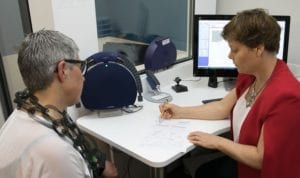
Explaining the hearing test
The cause of hearing loss can be:
- conductive – A blockage reduces sound from passing through the outer or middle ear causing hearing loss
- sensorineural – where the cochlear is not able to detect all the sounds
- an auditory processing disorder (APD) – where the brain cannot process the sound that is detected by your ears.
Your Audiologist will discuss your test results. If there is hearing loss, we will let you know why it is affecting your ability to understand people speaking; even though you can hear some sounds easily. At this point, we will refer you on to any other professionals, for further assessment or management, if needed.
If you are interested, we will tell you a bit about hearing aids and possible options that might suit you. You can even have a listen through some hearing aids.
Step 3: Needs Assessment
Once you have decided to learn more about hearing aids, we will go through your needs assessment process. We will ask you questions about your lifestyle and hearing challenges. From here, we can decide on the hearing aid features and level of technology that suits you best. At this point, we create a list of situations where you would like to hear and communicate better. When choosing hearing aids for you, we take into account your:
- Hearing loss and other physical factors
- Lifestyle and your hearing needs
- Preferences, i.e. what the hearing aid will look like or specific functionality
- Funding and budget – you may be eligible for funding from a government agency

Finding out about your hearing needs
Grant Waldrom – Orewa
Your hearing aid trial
Once you have decided to trial hearing aids, the process usually takes four to six weeks. The eight-week trial period allows you to be confident that you hear well with your hearing aids in various listening environments. Depending on your type and degree of hearing loss, it takes a few days to a few weeks to adjust to hearing sound again. Eight weeks is plenty of time for you to go through the adaptation process and get used to your new hearing aids.
Hearing aids are always paid for in full before taking them home. If you decide that hearing aids are not for you, you can hand them back within the eight-week time frame. If you do, you will be refunded the cost of the hearing aids minus the deposit (which covers some of the time we spent with you). We also have the option of changing to other hearing aids at this time if needed.
Step 4: Hearing Aid Fitting Appointment
Our main goal at the fitting is to get you comfortable with the sound and management of your new hearing aids. We will:
- Calculate the sound required and program your hearing aids specifically for your hearing loss.
- Do real-ear measures – use a small soft microphone to measure the sound in your ear canal. Real-ear measures verify that the hearing aids have the right amplification to compensate for your hearing loss.
- Discuss the management of hearing aids, including, putting them in your ears, adjusting them, setting up remote control apps on your phone, cleaning and care and using the phone
- Talk to you about how it takes time to adjust to hearing sound again and the importance of wearing the hearing aids as much as you can.
- Book the follow-up appointment – in 1 or 2 weeks.

Hearing aid fitting – with real-ear measures
Follow up appointments
Follow up appointments allow us to check how you are going with the hearing aids and make adjustments, as required. Usually, people have got used to the initial settings of the hearing aids and are ready for a clearer sound. The number of follow up appointments required will vary for different clients.

Follow up appointments
Step 5: Finalising your hearing aids and ongoing care
Finalising means that you are happy with your hearing aids and have decided you want to keep them. We will not schedule another appointment at this time. However, you are welcome to contact us again if you have further questions or need adjustments to your hearing aids.
6 Months of appointments included
We include all the appointments up until 6 months in your initial fitting fees. That way, we can make sure your hearing aids are working well for you.
Ongoing care of your hearing and hearing aids
Warranty repairs
It is worth having your hearing aids sent off for a check over before your warranty expires. We will contact you before your warranty expires, so you can bring your hearing aids in and we will send them off. In many cases, the hearing aids are replaced or repaired under warranty, giving you refurbished hearing aids moving forward.
Bi-annual hearing test and hearing aid adjustment appointments
We will send you an email each year, asking how you are going with your hearing aids. Every two years, we will recommend a bi-annual review. We recommend you have a hearing test and hearing aid adjustment every two years, or sooner if you notice a change in your hearing. At your hearing test and hearing aid adjustment appointment, we will test your hearing and adjust your hearing aids to your current hearing levels.
We will also check your hearing aids over and make sure they are working as they should. If your hearing aids are not working as expected, we will send them off for repair. These appointments ensure you continue to hear as well as possible with your hearing aids.
Maree contacted me recently, and I went in for another check where she gave my hearing aids a tune-up to maintain their efficiency. With my slowly deteriorating hearing, I hadn’t noticed I didn’t hear as clearly as before. I was surprised at how much more I could hear once my hearing aids were adjusted. Excellent service indeed!
Max Ross- Auckland CBD
Replacing your hearing aids
Traditionally hearing aids lasted about 4-5 years as they would be affected by wax, moisture, dust and dirt. Now, most hearing aids are covered by high tech coatings that make them much more resistant to moisture.
Hearing aid lifetime – It is not possible to tell how long these current aids will last but with proper care possibly 6-8 years. You will need regular hearing assessments and adjustments over that time to keep them working the best for you.
Insurance – Please list your hearing aids on your insurance policy just in case they get lost or something happens to them.
As an Auckland Hearing client, you will become part of our Auckland Hearing community. As long as you are interested, we will keep you up to date about the hearing world from hearing care to the latest hearing aids.
Please feel free to browse among the other articles about hearing loss and hearing aids.
A bit about Auckland Hearing
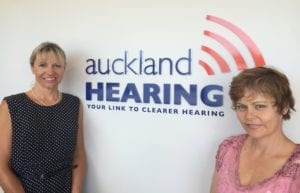
Anna and Maree – At Auckland Hearing
Auckland Hearing is an independent hearing aid and audiology clinic set up by Maree O’Sullivan. Maree
has worked in Audiology for nearly 25 years and started Auckland Hearing so she could focus on the needs of each client (rather than corporate profits).
We provide a full range of hearing services and work with all of the Ministry of Health approved hearing aid brands in New Zealand. This means we can fit the hearing aids that best suit your needs.
Call Anna to book your appointment with Maree now.
The post Getting Hearing Aids – What is the Process? appeared first on Auckland Hearing.
]]>The post Set 900 by Sennheiser – Your hearing aid alternative appeared first on Auckland Hearing.
]]>As hearing loss increases in severity it makes conversation more difficult and stops us connecting with our friends and family. Some people need a simple solution that helps them hear their TV, listen to music and family and friends. The Set 900 by Sennheiser will help you hear music, family and the TV again.
Introducing the Set 900 by Sennheiser
This headset offers crystal clear audio in a lightweight, comfortable design. There are 3 setting to optimise speech understanding on the device and a large volume control that allows you to conveniently adjust volume without hassle.
The Set 900 by Sennheiser is simple to use, just place to your ears like a stethoscope and listen. Once you are finished place it back in the charging cradle to keep the battery charged.
This is deal for those wanting an easy way to keep communicating with family and friends but where manual dexterity or poor vision is getting in the way.

Three listening options
- Use the Set 900 by Sennheiser to follow the conversation with family and friends.
- Connect directly to the TV or music. By connecting the transmitter to your TV or sound system you can send the sound directly to the Set 900 receiver.
- At the theatre – your will get amplified stereo sound when you are out and about and in rooms equipped with infra-red technology (like the theatre).
Use immediately
To get started with your Set 900 by Sennheiser you just need to charge it then use it. No need for a hearing test or to travel to the clinic.
The post Set 900 by Sennheiser – Your hearing aid alternative appeared first on Auckland Hearing.
]]>The post Hearing aid batteries – types, sizes & recycling appeared first on Auckland Hearing.
]]>Size 10 batteries (yellow)

Yellow labelled size 10 hearing aid batteries are used in the smallest hearing aids including Invisible in the canal (IIC), completely in the canal (CIC) and the extra small behind the ear receiver in the canal (RIC) hearing aids styles.
They last between 3- 7 days depending on the degree of hearing loss and technology in the hearing aids.
Size 312 batteries (brown)

Brown labelled Size 312 hearing aid batteries are used in some receiver in the canal (RIC) and in the ear (ITE) hearing aids.
They last about 10 – 14 days depending on the level of amplification and functionality in the hearing aids. Using functions like streaming sound from devices like your phone has a high battery drain and shortens battery life.
Size 13 Batteries (Orange)

Orange labelled Size 13 hearing aid batteries are used in some receiver in the canal (RIC), behind the ear (BTE) and in the ear (ITE) hearing aids.
They last around 10 – 14 days depending on the level of amplification and functionality in the hearing aids. Using functions like streaming sound from devices like your phone has a high battery drain and shortens battery life.
Size 675 batteries (blue)

Blue labelled Size 675 hearing aid batteries are used in hearing aids that require a lot of power including bone conduction hearing aids (BAHA) and cochlear implants (CI).
They last about 10 – 14 days depending on the level of amplification and functionality in the hearing aids, BAHA or CI.
Streaming is now available in some CIs and this will increase the battery drain.
Types of batteries
Zinc-air batteries
Disposable zinc-air batteries are the most common type of hearing aid batteries. They have a sticker on them that covers small holes in the top of the battery. Once you pull the sticker off air gets into the battery and it begins to work. Zinc-air batteries usually last between 5 and 14 days depending on the battery size.
Once the sticker is pulled off the battery will continue to drain even if the hearing aids are not being used.
Zinc-air hearing aid battery tips
- Stick the battery sticker onto your calendar when you change your battery, it will let you know when you should expect to change the battery again.
- Only pull the stickers off when you are ready to use them
- Increase your hearing aids battery life by leaving the battery on the table for 1-5 mins after pulling off the sticker. This allows more air into the holes in the top of the battery.
Rechargeable Silver-zinc batteries and nickel – metal hydride batteries

Rechargeable silver-zinc and nickel-metal hydride batteries generally last 10 to 14 hours (a day) before needing to be recharged – usually over night. The batteries look similar to zinc-air batteries but they do not have the holes to let air in.
An advantage of both Rechargeable Silver-zinc batteries and nickel – metal hydride batteries is that if the batteries run out, the same size disposable zinc-airbatteries can be used This might be helpful if they run out during the day or if you go on holiday and do not want to take a charger with you.
Rechargeable silver-zinc and nickel-metal hydride batteries last about a year and then need replacing. When you get your hearing aids at Auckland Hearing we notify you annually when it is time to renew your rechargeable batteries.
Lithium – ion rechargeable batteries

Lithium-ion (Li-ion) batteries are sealed within the hearing aid and are only removable by the hearing aid manufacturer. They are expected to last for 5 to 6 years, potentially the life of the hearing aid.
For the batteries to be replaced the whole hearing aid has to go into the manufacturer for a service.
The advantages of rechargeable batteries
- Many people choose rechargeable batteries as they are easy to manage. You just need to put them in the charger each night.
- With rechargeable batteries, there is no need to open fiddly battery doors or remember when the batteries need to be replaced.
- Rechargeable batteries are also better for the environment as you are not adding so many batteries to the landfill.
Buying your hearing aid batteries
It does not matter what branding is on your batteries, often hearing aid batteries are re-branded by a hearing clinic or a manufacturer. Clinics that fit hearing aids may be a better choice than other retailers, as they know the importance of good quality batteries. At Auckland Hearing we sell batteries by the card or at a discount by the box.
Hearing aid battery expiry date

Check the expiry date on the back of the battery pack. The expiry date on the back fo the packet should be at least a year away. Expired batteries not only have a shorter life, they may secrete a corrosive white power into the battery compartment of your hearing aids.
It is best to buy your hearing aid batteries from a retailer that sells a lot of batteries, so they have not been sitting on the shelf for a long time.
Recycling your hearing aid batteries

Auckland Hearing has a hearing aid battery recycling program. Please bring in your used batteries as we will make sure they are disposed of safely.
We send our used hearing aid batteries to UpCycle who hold EPA approved battery export permits. The batteries are exported to South Korea for processing, where they get stripped off and chemicals are extracted for recycling.
The post Hearing aid batteries – types, sizes & recycling appeared first on Auckland Hearing.
]]>